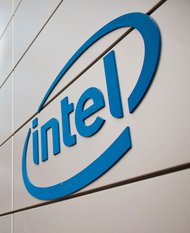But then the technology changed, and the company struggled to keep up. Eventually it realized it could not continue as it was. It was broken up and acquired, with investors receiving a fraction of what their shares had been worth at the peak.
That was the story of the Digital Equipment Corporation, which was based in a former textile mill in Maynard, Mass., and became the second-largest computer company in the world in the 1980s. In 1998, it was acquired by Compaq, a maker of personal computers that had destroyed Digital’s business in mini computers. It proved to be a poor deal for Compaq, which itself was acquired later by Hewlett-Packard.
A year before Digital was acquired, a small mobile technology company based in Waterloo, Ontario, went public on the Canadian market. In 1999, it listed on Nasdaq and became a phenomenon. It was called Research in Motion until this year, when its corporate name was changed to that of its primary product, BlackBerry.
Now it seems as if BlackBerry will follow the Digital Equipment path. It has hired bankers to pursue its “strategic options,” and the expectation is that it will be acquired for its cash and patents while the product that made it rich and famous will gradually vanish.
Digital left behind a large number of technology companies in Massachusetts, some of which flourished in the very mill that Digital made famous. BlackBerry’s impact on Waterloo seems likely to be similar.
This column is not about the changing technology that caused the decline of BlackBerry, which by now is well known. Instead, it is about the way the company handled prosperity when profits were plentiful — a way that served BlackBerry executives well and that pleased Wall Street but provided no benefits to loyal shareholders.
BlackBerry’s corporate filings show that over the years it distributed $3.5 billion to shareholders. (Although BlackBerry is based in Canada, it keeps its books in United States dollars and that number, like all others in this column, is in United States currency.) That is an impressive amount, especially considering that the entire company is now worth only a little more than $5 billion.
But loyal shareholders did not receive any of that money. To get the money, an investor had to sell. The money was spent on share buybacks, and most of those buybacks came in 2008 and 2009, when the company was flying high.
BlackBerry’s financial strategy was not particularly unusual, although it does stand out in the way it abused the rules on executive stock options. Perhaps it would never have paid dividends anyway, but those options gave the company’s executives good reasons to avoid dividends and concentrate on share buybacks.
The result was a classic “sell low and buy high” strategy, one that did wonders for the executives.
Over the years, BlackBerry executives and employees exercised options to acquire 83.3 million shares, adjusted for two stock splits. On average, they paid $4.38 a share.
Those prices were, of course, well below the market value of the shares at the time. That is the way options work — or at least are supposed to work. The exercise price is equal to the market price when the options are issued, but the executive has up to 10 years to exercise them, and will do so only if the price has increased.
One reason companies that issue a lot of options prefer stock buybacks to dividends is that while buybacks may raise the market value of the stock and thus increase the value of an outstanding option, dividends are less likely to do so. Option holders, unlike shareholders, do not benefit from dividends.
Corporate managements like to say that options do not dilute shareholders’ stakes because the company acquires and retires an offsetting number of shares. BlackBerry did just that, buying 85.5 million shares that it canceled. It bought an additional 12.3 million shares that it did not cancel but held to provide stock to issue directly to executives.
Over all, it paid an average of $36.10 for the shares it repurchased.

Floyd Norris comments on finance and the economy at nytimes.com/economix.
Article source: http://www.nytimes.com/2013/08/23/business/economy/how-blackberry-handled-prosperity-past.html?partner=rss&emc=rss
